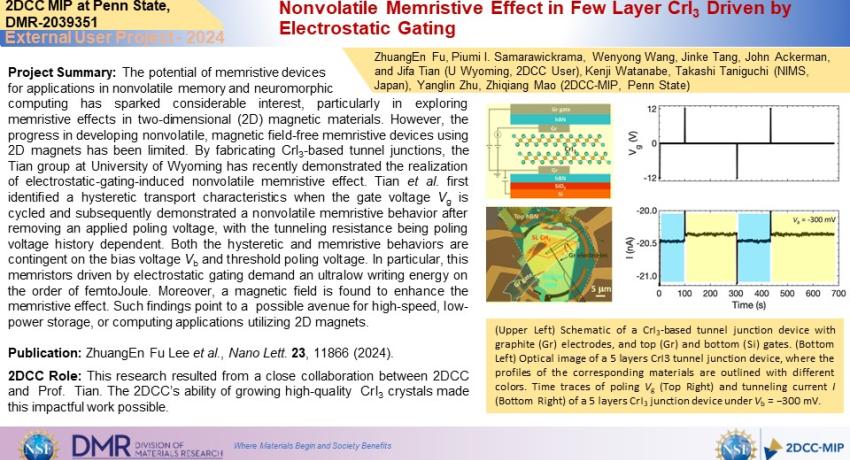The potential of memristive devices for applications in nonvolatile memory and neuromorphic computing has sparked considerable interest, particularly in exploring memristive effects in two-dimensional (2D) magnetic materials. However, the progress in developing nonvolatile, magnetic field-free memristive devices using 2D magnets has been limited. By fabricating CrI3-based tunnel junctions, the Tian group at University of Wyoming has recently demonstrated the realization of electrostatic-gating-induced nonvolatile memristive effect. Tian et al. first identified a hysteretic transport characteristics when the gate voltage Vg is cycled and subsequently demonstrated a nonvolatile memristive behavior after removing an applied poling voltage, with the tunneling resistance being poling voltage history dependent. Both the hysteretic and memristive behaviors are contingent on the bias voltage Vb and threshold poling voltage. In particular, this memristors driven by electrostatic gating demand an ultralow writing energy on the order of femtoJoule. Moreover, a magnetic field is found to enhance the memristive effect. Such findings point to a possible avenue for high-speed, low-power storage, or computing applications utilizing 2D magnets.
Publication: Zhuang En Fu Lee et al., Nano Lett. 23, 11866 (2024).
2DCC Role: This research resulted from a close collaboration between 2DCC and Prof. Tian. The 2DCC’s ability of growing high-quality CrI3 crystals made this impactful work possible.
